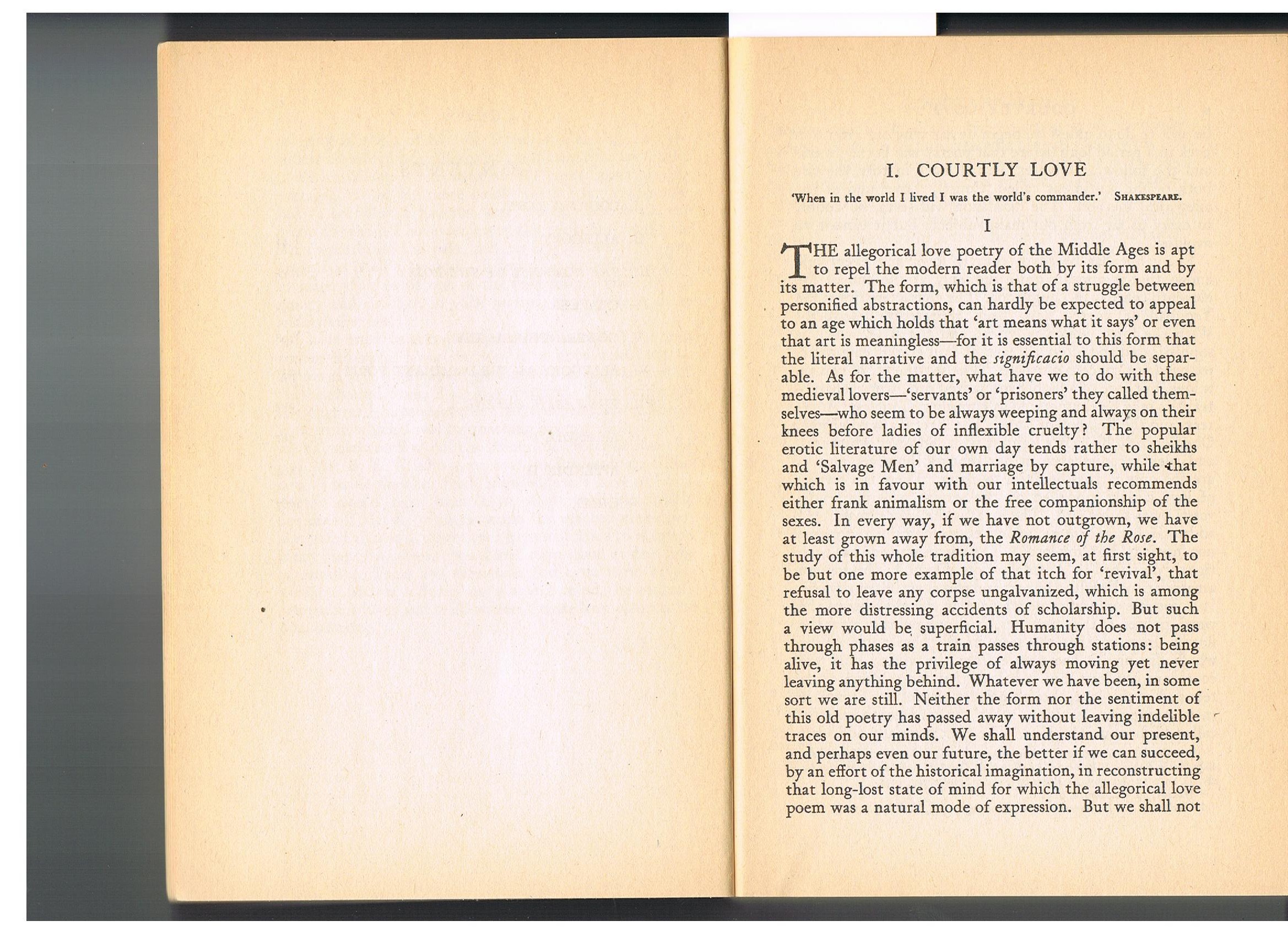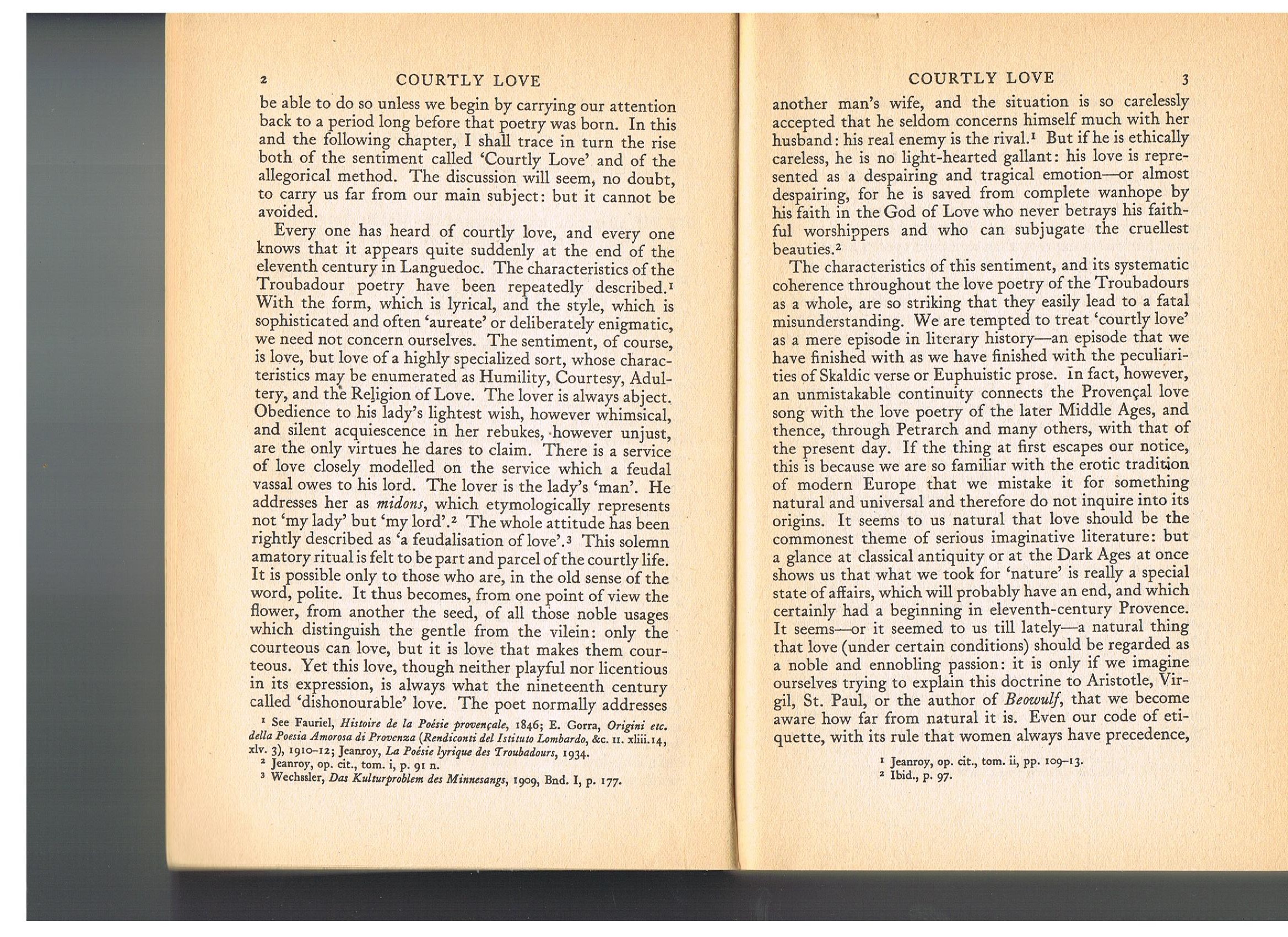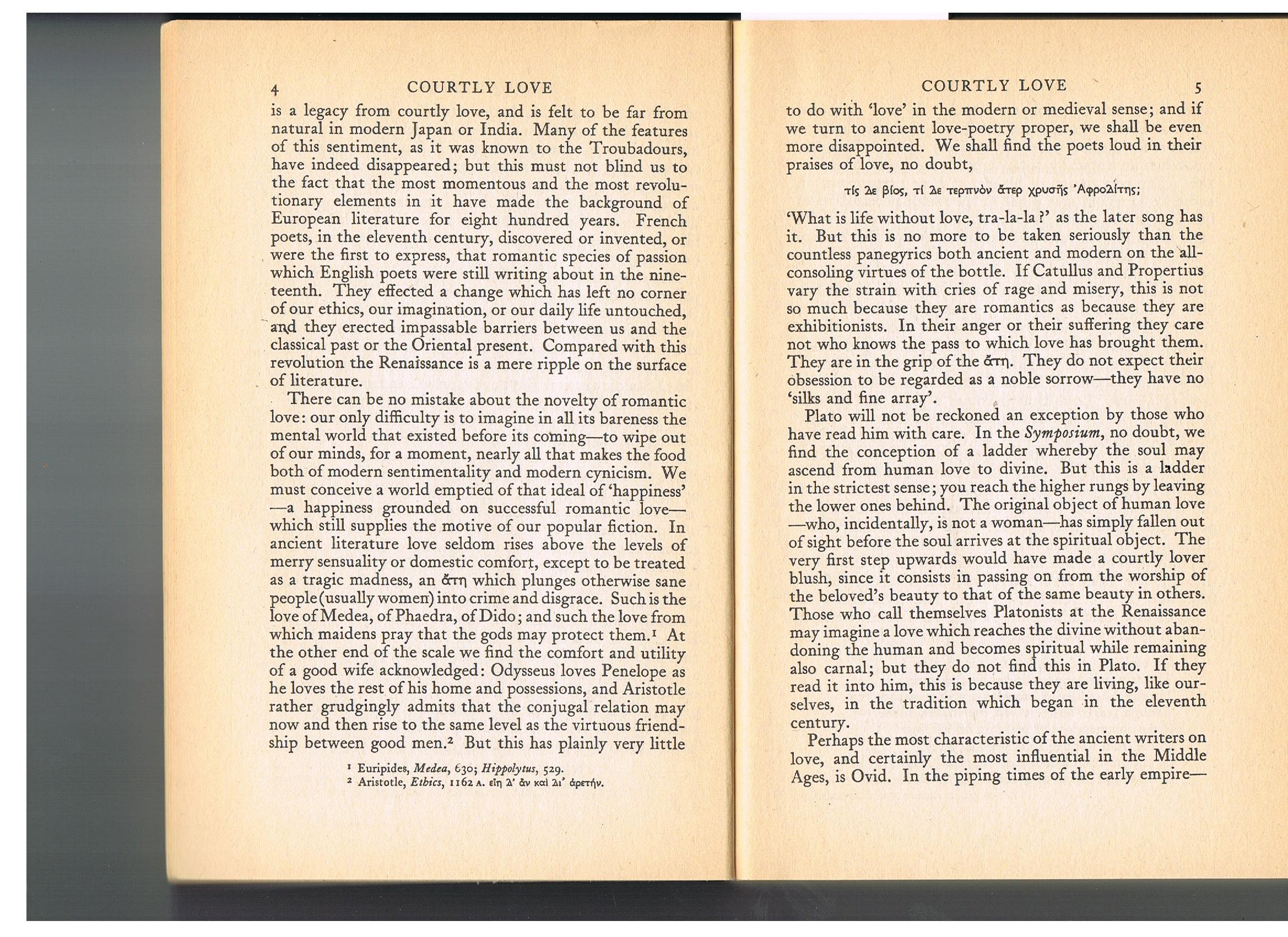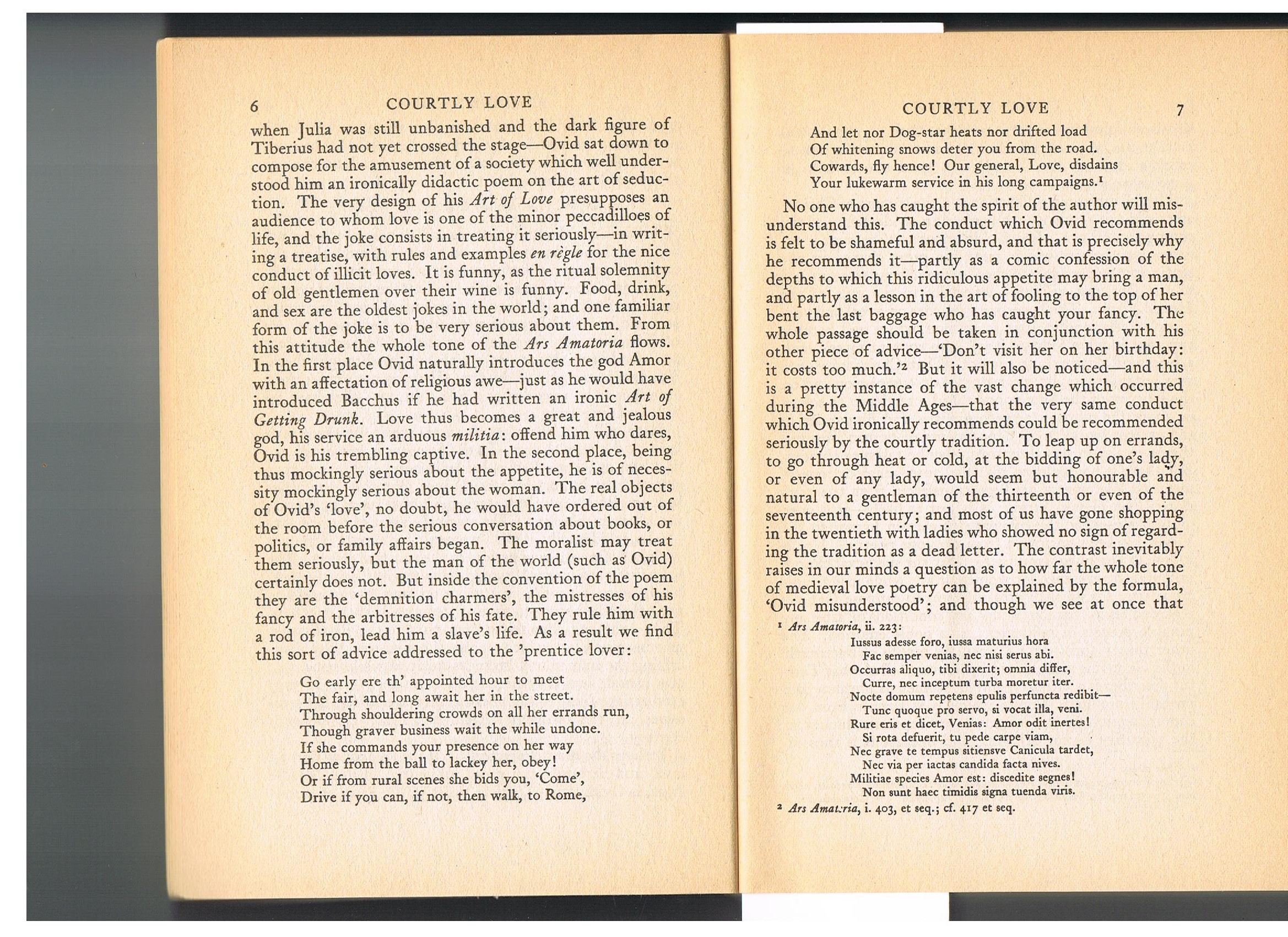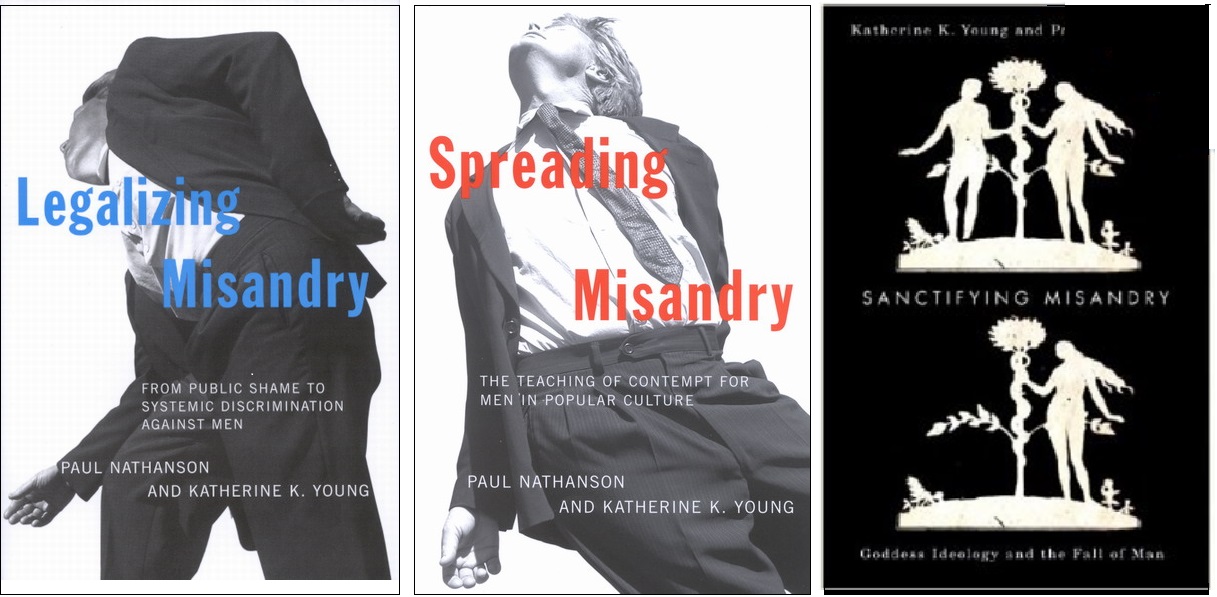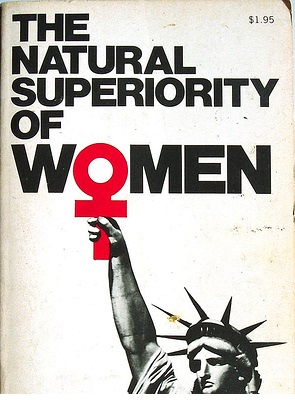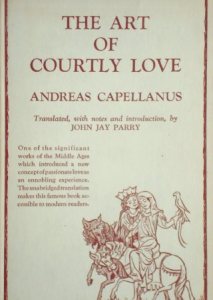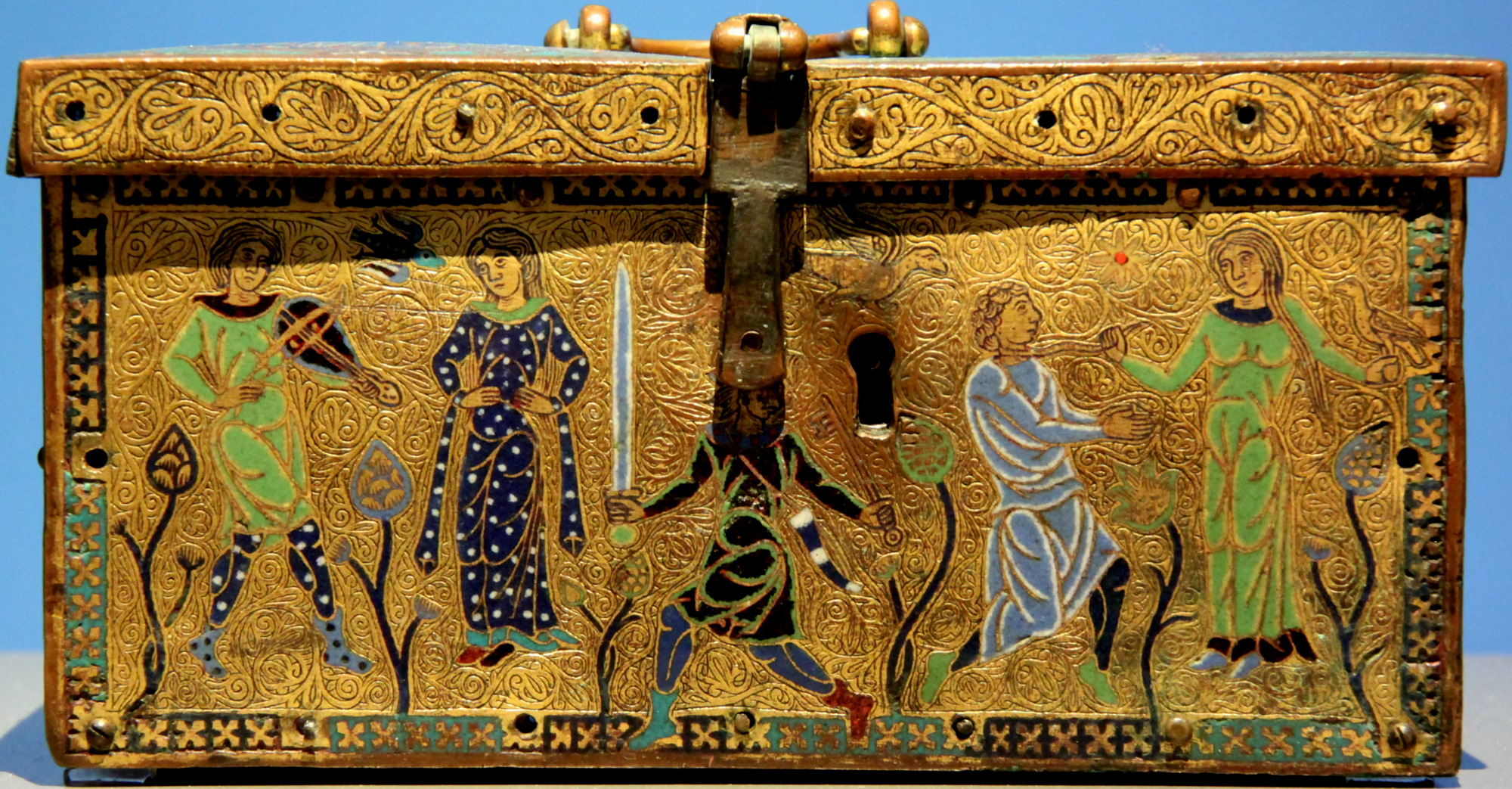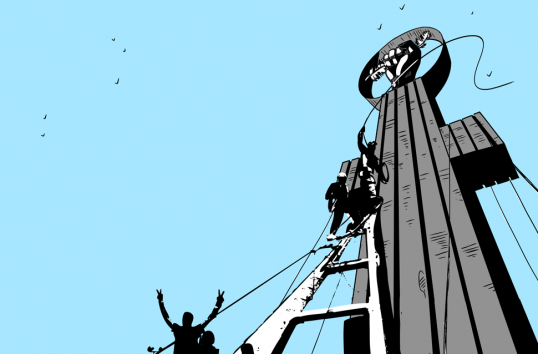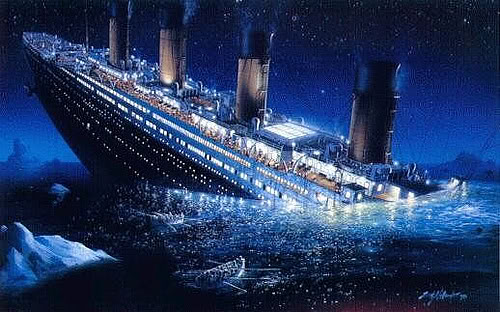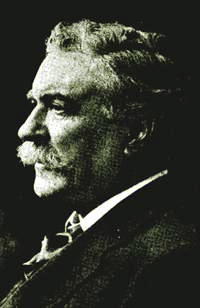The golden casket above depicts scenes of servile male behaviour toward women that was typical of ‘courtly love’ culture of the Middle Ages. Such objects were given to women as gifts by men seeking to impress. Note the woman standing with hands on hips in a position of authority, and the man being led around by a yoke or rope in a position of subservience.
It is clear that much of what we today call gynocentrism was invented in the Middle Ages with the cultural practices of romantic chivalry and courtly love. In 12th century Europe feudalism served as the basis for a new kind of love in which men were to play the role of vassal to women who played the role of an idealized Lord. C.S. Lewis, back in the middle of the 20th Century, referred to this historical revolution as “the feudalisation of love,” and stated that it has left no corner of our ethics, our imagination, or our daily life untouched. “Compared with this revolution,” states Lewis, “the Renaissance is a mere ripple on the surface of literature.”1 Lewis states;
“Everyone has heard of courtly love, and everyone knows it appeared quite suddenly at the end of the eleventh century at Languedoc. The sentiment, of course, is love, but love of a highly specialized sort, whose characteristics may be enumerated as Humility, Courtesy, Adultery and the Religion of Love. The lover is always abject. Obedience to his lady’s lightest wish, however whimsical, and silent acquiescence in her rebukes, however unjust, are the only virtues he dares to claim. Here is a service of love closely modelled on the service which a feudal vassal owes to his lord. The lover is the lady’s ‘man’. He addresses her as midons, which etymologically represents not ‘my lady’ but ‘my lord’. The whole attitude has been rightly described as ‘a feudalisation of love’. This solemn amatory ritual is felt to be part and parcel of the courtly life.” 2
With the advent of (initially courtly) women being elevated to the position of ‘Lord’ in intimate relationships, and with this general sentiment diffusing to the masses and across much of the world today, we are justified in talking of a gynocentric cultural complex that affects, among other things, relationships between men and women. Furthermore, unless evidence of broadspread gynocentric culture can be found prior to the Middle Ages, then gynocentrism is precisely 800 years old. In order to determine if this thesis is valid we need to look further at what we mean by “gynocentrism”.
The term gynocentrism has been in circulation since the 1800’s, with the general definition being “focused on women; concerned with only women.” 3 From this definition we see that gynocentrism could refer to any female-centered practice, or to a single gynocentric act carried out by one individual. There is nothing inherently wrong with a gynocentric act (eg. celebrating Mother’s Day) , or for that matter an androcentric act (celebrating Father’s Day). However when a given act becomes instituted in the culture to the exclusion of other acts we are then dealing with a hegemonic custom — i.e. such is the relationship custom of elevating women to the role of Lord in relation to male vassals.
Author of Gynocentrism Theory Adam Kostakis has attempted to expand the definition of gynocentrism to refer to “male sacrifice for the benefit of women” and “the deference of men to women,” and he concludes; “Gynocentrism, whether it went by the name honor, nobility, chivalry, or feminism, its essence has gone unchanged. It remains a peculiarly male duty to help the women onto the lifeboats, while the men themselves face a certain and icy death.” 4 I agree with Kostakis’ descriptions of assumed male duty, however the phrase ‘gynocentric culture’ more accurately carries his intention than gynocentrism alone. Thus when used alone in the context of this website ‘gynocentrism’ refers to part or all of gynocentric culture, which phrase I will define here as any culture instituting rules for gender relationships that benefit females at the expense of males across a broad range of measures.
At the base of gynocentric culture lies the practice of enforced male sacrifice for the benefit of women. If we accept this definition we can look back and ask whether male sacrifices throughout history were always made for the sake women, or alternatively for the sake of some other primary goal? For instance, when men went to die in vast numbers in wars, was it for women, or was it rather for Man, King and Country? If the latter we cannot then claim that this was a result of some intentional gynocentric culture, at least not in the way I have defined it here. If the sacrifice isn’t intended directly for the benefit women, even if women were occasional beneficiaries of male sacrifice, then we are not dealing with gynocentric culture.
Male utility and disposability strictly “for the benefit of women” comes in strongly only after the advent of the 12th century gender revolution in Europe – a revolution that delivered us terms like gallantry, chivalry, chivalric love, courtesy, romance and so on. From that period onward gynocentric practices grew exponentially, culminating in the demands of today’s feminism. In sum, gynocentrism (ie. gynocentric culture) was a patchy phenomenon at best before the middle ages, after which it became ubiquitous.
With all this in mind it makes little sense to talk of gynocentric culture starting with the industrial revolution a mere 200 years ago (or 100 or even 30 yrs ago), or of it being two million years old as some would argue. We are not simply fighting two million years of genetic programming; our culturally constructed problem is much simpler to pinpoint and to potentially reverse. The historical evidence is strong. All we need do now is look at the circumstances under which gynocentrism first began to flourish and attempt to reverse those circumstances. Specifically, that means rejecting the illusions of romantic love (feudalised love), along with the practices of misandry, male shaming and servitude that ultimately support it.
References
1. C.S. Lewis, Friendship, chapter in The Four Loves, HarperCollins, 1960
2. C.S. Lewis, The Allegory of Love, Oxford University Press, 1936
3. Dictionary.com – Gynocentric
4. Adam Kostakis, Gynocentrism Theory – (Published online, 2011). Although Kostakis assumes gynocentrism has been around throughout recorded history, he singles out the Middle Ages for comment: “There is an enormous amount of continuity between the chivalric class code which arose in the Middle Ages and modern feminism… One could say that they are the same entity, which now exists in a more mature form – certainly, we are not dealing with two separate creatures.”

